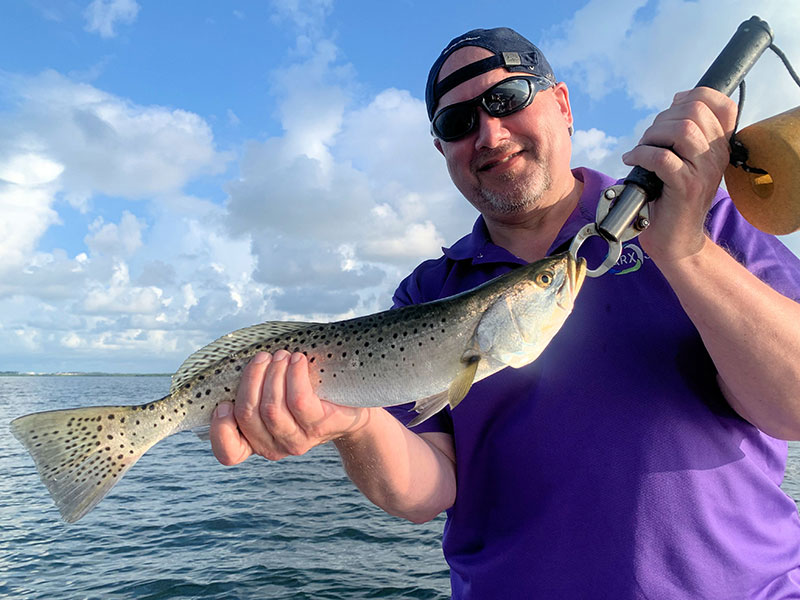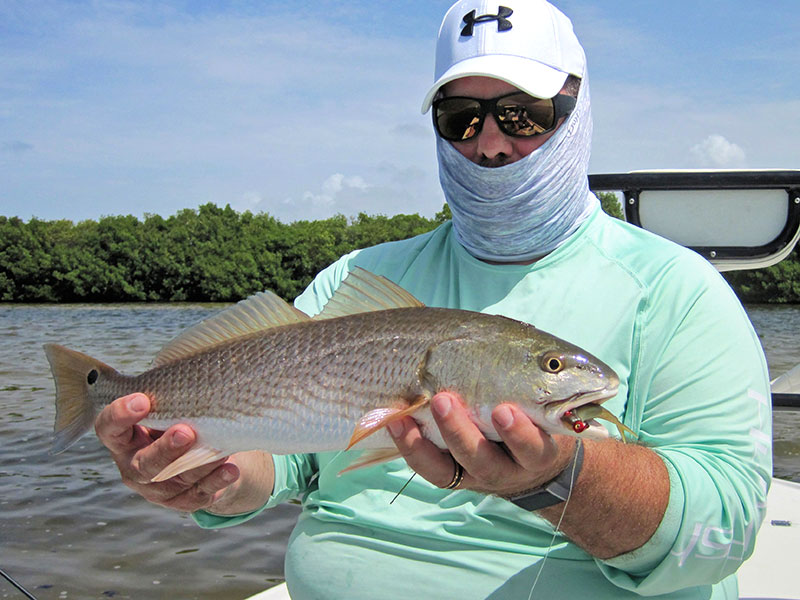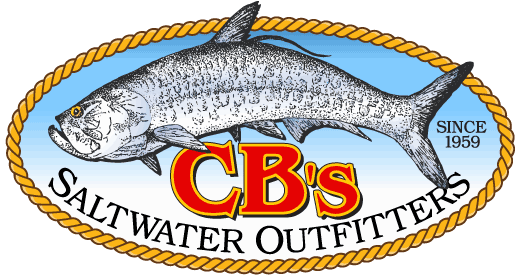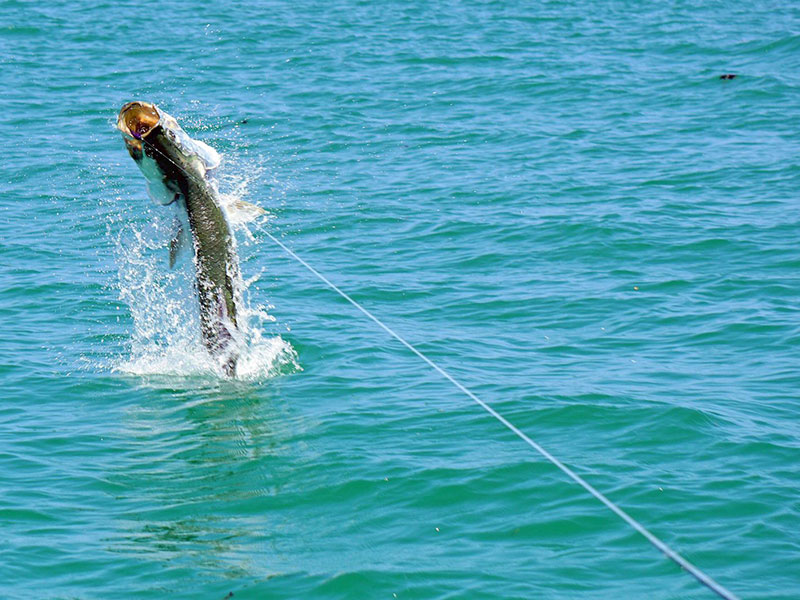This is my favorite time to fly fish for tarpon, which should still be a good option in the coastal gulf this month. Spin anglers will do best by setting up in travel lanes and drifting live baits under floats while staying ready to sight cast to fish that may pop up with no notice.
The tactics are the same as earlier in the season, except July fish are usually more aggressive. Tarpon will thin out in the coastal gulf towards the end of the month as they begin to move to inside waters where they can be targeted with flies, a variety of DOA lures or live bait.
In addition to tarpon, you might find tripletail or cobia in the coastal gulf this month. You might find cobia swimming with tarpon or cruising bars in shallow water along the beach. You can use your tarpon fly or spin tackle for cobia, but a medium spinning outfit or an 8 to 9-weight fly rod will be better suited for tripletail, which I occasionally run into this time of year, either around a navigational marker or floating debris.
Catch and release snook fishing in the ICW at night or in the surf should also be good during July. You’ll find snook in the surf, where you can walk along the beach and sight cast to them with flies or lures. Spin anglers should do well fishing lighted docks and bridges in the ICW with live bait, CAL jigs with shad tails or jerk worms or DOA shrimp.
Fly anglers should do well with clear intermediate sink tip lines and wide profile flies, such as Lefty’s Deceiver or EP flies, since larger baitfish may be more predominant. Docks and bridges close to passes should be the best ones.
You’ll find reds very active in shallow water this month. They should form large schools towards the end of the month. Look for them along the edges of bars or in potholes when the tide is low or along mangrove shorelines and around oyster bars when the tide is high. You’ll also find big trout in many of the same areas where you find reds, but the bite for big trout is usually best early or late in the day. In my opinion it’s important to protect larger trout, which are usually female breeders.
I like to drift deep grass flats and cast ahead of my drift with jigs, flies or live shrimp to find trout. A drift anchor will slow your drift to a more manageable speed if it’s windy. Look for birds or baitfish on the surface to find fish. You may also find Spanish mackerel, blues, pompano and more mixed with trout on deep grass flats. Flats close to passes or on points that get good tidal flow are usually the most productive.
There are lots of options this month; tarpon, snook and more. You’ll want to fish early in the day in shallow water due to heat.
Our natural resources are under constant pressure from red tides fueled by industrial, agricultural and residential runoff, toxic spills and discharges, freezes, increasing fishing pressure and habitat loss and degradation, please limit your kill, don’t kill your limit!
This is my favorite time to fly fish for tarpon, which should still be a good option in the coastal gulf this month. Spin anglers will do best by setting up in travel lanes and drifting live baits under floats while staying ready to sight cast to fish that may pop up with no notice.
The tactics are the same as earlier in the season, except July fish are usually more aggressive. Tarpon will thin out in the coastal gulf towards the end of the month as they begin to move to inside waters where they can be targeted with flies, a variety of DOA lures or live bait.
In addition to tarpon, you might find tripletail or cobia in the coastal gulf this month. You might find cobia swimming with tarpon or cruising bars in shallow water along the beach. You can use your tarpon fly or spin tackle for cobia, but a medium spinning outfit or an 8 to 9-weight fly rod will be better suited for tripletail, which I occasionally run into this time of year, either around a navigational marker or floating debris

Scott Perez, from Indianapolis, with a nice looking trout he caught and released on CAL jigs while fishing with Capt. Rick Grassett in a previous July.
Catch and release snook fishing in the ICW at night or in the surf should also be good during July. You’ll find snook in the surf, where you can walk along the beach and sight cast to them with flies or lures. Spin anglers should do well fishing lighted docks and bridges in the ICW with live bait, CAL jigs with shad tails or jerk worms or DOA shrimp.
Fly anglers should do well with clear intermediate sink tip lines and wide profile flies, such as Lefty’s Deceiver or EP flies, since larger baitfish may be more predominant. Docks and bridges close to passes should be the best ones.

Dean Poetzl, from North Port, with a red he caught and released on CAL jigs while fishing with Capt. Rick Grassett in a previous July.
You’ll find reds very active in shallow water this month. They should form large schools towards the end of the month. Look for them along the edges of bars or in potholes when the tide is low or along mangrove shorelines and around oyster bars when the tide is high. You’ll also find big trout in many of the same areas where you find reds, but the bite for big trout is usually best early or late in the day. In my opinion it’s important to protect larger trout, which are usually female breeders.
I like to drift deep grass flats and cast ahead of my drift with jigs, flies or live shrimp to find trout. A drift anchor will slow your drift to a more manageable speed if it’s windy. Look for birds or baitfish on the surface to find fish. You may also find Spanish mackerel, blues, pompano and more mixed with trout on deep grass flats. Flats close to passes or on points that get good tidal flow are usually the most productive.
There are lots of options this month; tarpon, snook and more. You’ll want to fish early in the day in shallow water due to heat.
Our natural resources are under constant pressure from red tides fueled by industrial, agricultural and residential runoff, toxic spills and discharges, freezes, increasing fishing pressure and habitat loss and degradation, please limit your kill, don’t kill your limit!




